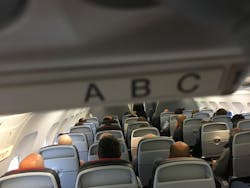Reimagining the Passenger Experience: The Importance of Airport and Airline Collaboration
More passengers are moving through global airports than ever before. However, despite new investment and technological advancements, passengers still perceive a deterioration of the travel experience. Customers’ expectations have changed dramatically in the past decade, and airline passengers are no exception. Companies like Uber, Blue Apron, and Netflix have raised the bar for customer experience by providing customers with what they want, when and how they want it, while airports and airlines have struggled to keep pace.
Airports and airlines no longer get credit for delivering on the basics; they need to exceed them through innovative customer-centric solutions. To reap the financial benefits of this cultural shift, airports and airlines must examine today’s travel experience through the same customer-centric lens and work collaboratively to design and implement creative solutions.
Much of the issue stems from a divergence between the interests of the passengers and those of the airlines, and the pressure to deliver more with less (and for more passengers) has negatively impacted air travel in this regard. Airports and airlines want to generate more revenue, reduce operating costs, and increase asset utilization — all while simultaneously strengthening customer loyalty. Passengers want to spend less time in the airport, get to their destination on schedule, and enjoy a comfortable, safe flight.
Customer-centric solutions from airlines and airports must account for these divergent interests. In the case of an airport, a well-designed path from curb to gate translates to more dwell time within the terminal and more opportunities for passengers to enjoy the airport’s commercial offerings. Indeed, while divergent interests will continue to exist, airlines and airports investing in a shared customer experience translates directly into dollars for both groups.
Adopting a customer-centric approach requires ideas that speak to the traveler as an individual in order to provide a better overall travel journey and hopefully close these customer experience gaps. Solutions must focus on the critical human needs of the traveler that address mental, physical, and emotional well-being. Airlines and airports need to:
- Provide real-time information to ensure a stress-free experience (mental well-being): From long security queues to inclement weather, traveling can often be an anxiety-ridden experience. Passengers’ expectations are set with information from anything ranging to a prior personal experience, a friend’s social media post, or even an anonymous online comment. Airports and airlines must understand, assess, and react to the various channels that can set negative expectations and increase travel anxiety.
- Build awareness that physical design can contribute to a positive travel experience (physical well-being): With more passengers traveling, both aircraft capacity and terminal capacity are greatly overstretched. Given the vast financial resources required for comprehensive infrastructure renovations, airports and airlines should instead rethink how passengers interact with the existing physical space and tailor their experiences with amenities and services that make the cramped quarters feel more personal.
- Show empathy toward the stress commonly associated with travel (emotional well-being): Traveling begets a range of emotions: a business traveler trying to navigate a crowded airport for a one-day trip might feel stress and frustration, a vacationer preparing for a family visit might feel happiness and relaxation, or a first-time flier might feel anxiety and excitement. The most successful airports and airlines will be those that can anticipate the diverse needs and desires of their travelers and create positive experiences for each of them.
To address these customer needs, airports and airlines must no longer think about getting people to buy and do what we want, but rather helping people buy and do what they want. Airport innovations that put the passenger at the heart of solution design include:
- Dynamic Queue Management: Airport and airline queues are one of the greatest complaints of passengers. However, airports have yet to address how time of day and time of year affect staffing requirements and, in turn, a passenger’s travel experience. Using new technology, proactively measuring performance, changing responsibility for managing queues, and working with airlines to ensure staff understand and comply with relevant protocols can have a profound impact on the customer experience.
- Innovative Mobile Apps: According to SITA, a UK-based air transport communications and technology company, 83 percent of passengers carry smartphones. Airports must be equipped with mobile applications that are usable and useful – providing desired data that the airlines traditionally provide, such as gate changes and flight delays. Using a similar model to popular apps like Pokémon GO, airports could leverage smartphone camera and GPS to overlay additional contextual information onto the airport’s physical environment, enabling passengers to select navigation to key locations (e.g., nearest restroom or restaurant) and follow Google Map-like directions. Airports could address language barriers by integrating technology such as Google Translate to relay loudspeaker announcements and transcripts.
- Increased Staff Presence: Not all solutions must be technological. In fact, process improvements are often easier and less costly to implement, and can lead to near-immediate change. Adding airline helpers equipped with the right information, the right attitude and the ability to speak different languages at potential security and check-in bottlenecks helps relieve passenger anxiety, keeps queues and other high traffic areas clear, and leads to a more efficient process.
Ultimately, it doesn’t matter whether customers experience frustrations and hiccups at the airport or on the airplane—everything contributes to a negative experience overall. Even though airports and airlines may view their respective roles in the travel chain quite differently, the customer views air travel as one single journey. To combat this, aviation stakeholders from across the travel chain must work together in new and innovative ways. After all, airlines and airports share in the need for customer-centric strategies to make a difference in air travel. Investing in customer experience, if done with appropriate forethought and precision, can unleash new revenues and loyalty opportunities for both airports and airlines, while driving down costs.
Mark Drusch, Eliot Lees and Stephen Freibrun serve on the executive team of ICF Aviation



